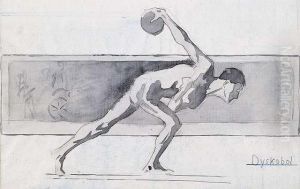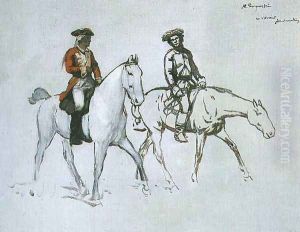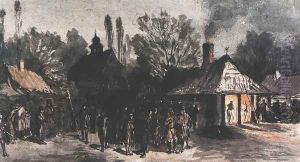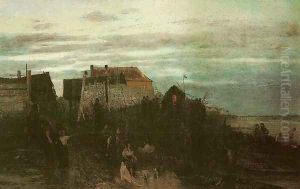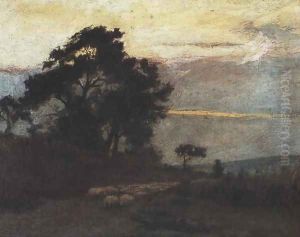Maksymilian Gierymski Paintings
Maksymilian Gierymski was a Polish painter, born on October 9, 1846, in Warsaw. He was a representative of realism and one of the most prominent Polish artists of the 19th century, known for his depictions of historical scenes and everyday life in Poland.
Maksymilian was the older brother of another notable Polish painter, Aleksander Gierymski. Both brothers were influenced by the turbulent political climate of Poland, which at that time was partitioned between Russia, Prussia, and Austria.
Gierymski began his art education at the School of Fine Arts in Warsaw in 1862. However, his studies were interrupted by his involvement in the January Uprising of 1863 against the Russian Empire, after which he was forced to leave the country. He continued his education at the Academy of Fine Arts in Munich, where he was influenced by the works of German artists and by the Munich school of painting, which emphasized detail and color.
Throughout his career, Gierymski struggled with health issues, including tuberculosis, which significantly impacted his work and productivity. Despite his health problems, he was a prolific artist, and his works were characterized by their attention to detail, use of color, and the ability to capture the atmosphere of the scenes he depicted.
His paintings often portrayed the Polish countryside, historical events, and genre scenes. Some of his notable works include 'Jewish Woman Selling Oranges' and 'Rider in front of the Inn'. Gierymski's works are considered to have had a significant influence on the development of Polish art, and he is admired for his commitment to portraying the reality of his homeland with sincerity and depth.
Maksymilian Gierymski's promising career was cut short by his premature death on September 16, 1874, at the age of 27. Despite his brief life, he left behind a legacy that continues to be celebrated in Polish art history. His works are held in high esteem and can be found in various museums and collections in Poland and abroad.

